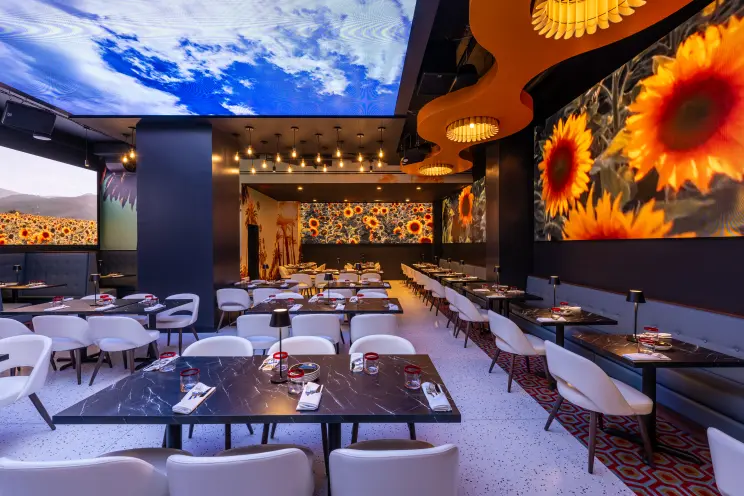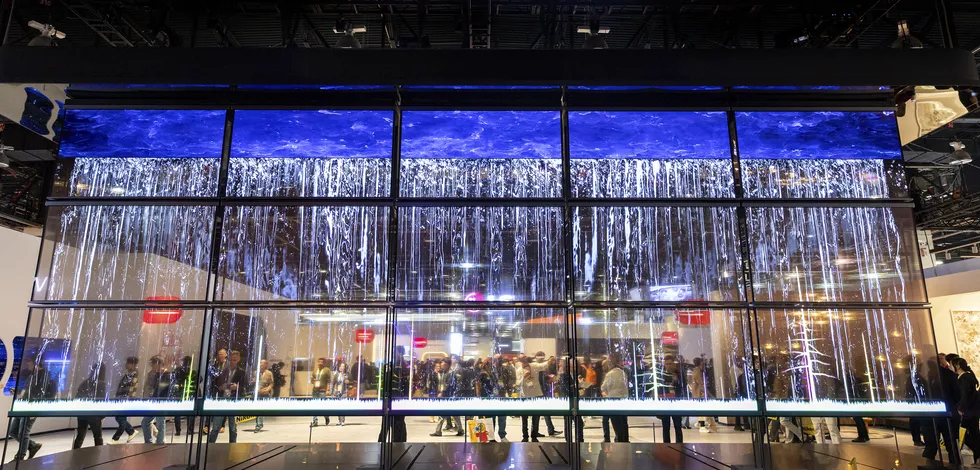

If you’ve walked past a storefront lately and found yourself momentarily captivated by glowing visuals that seem to float in midair—without blocking the view inside—you’ve already encountered the quiet power of a large transparent LED screen.
Sleek, futuristic, and surprisingly versatile, these oversized see-through advertising screens are rewriting the rules of visual communication. No longer just a novelty, transparent LED displays are fast becoming a staple for brands looking to blend digital storytelling with real-world presence—without compromising on space, light, or aesthetics.

At its simplest, a large transparent LED screen is a digital display that lets light and images coexist. Built with fine-pitch LEDs spaced precisely on a transparent mesh or glass panel, it allows viewers to see digital content and the physical environment behind it simultaneously.
That means retailers can project bold visuals onto their shop windows while still giving passersby a clear view of their products. Hotels can greet guests with an interactive transparent display right in the lobby. And brands at trade shows or product launches can use massive transparent LED walls to create immersive moments without building enclosed, traditional video installations.
But it’s not just the “wow” factor that makes them attractive. It’s how they transform unused glass surfaces—storefronts, office windows, building facades—into living, breathing screens.

While compact transparent displays have their place in counters or display cases, large-scale installations are where the real magic happens. A large transparent LED screen commands attention. It becomes architecture. It reshapes how a space looks and feels—without disrupting what’s already there.
Here’s why size can take your digital presence to the next level:
Brands that need both digital flexibility and a premium visual aesthetic—like automotive showrooms, flagship fashion stores, luxury hotels, or museums—are leaning into this format. And for those who only need it temporarily, transparent screen rental options (like those available in Los Angeles) offer a flexible solution for pop-ups, trade shows, or special activations.

Companies like SeethruDisplay have been pushing the limits of what’s possible with these installations—developing tailored solutions for everything from transparent signage for pop-ups to digital storefront screens for tech brands. And while they don’t make a fuss about it, their screens are behind many of the most visually compelling installations in the market today.
You might wonder: How does a transparent LED screen actually work? In short, these displays are made from a fine grid of light-emitting diodes that are spaced far enough apart to allow visibility through the gaps—often with up to 90% transparency, depending on pixel pitch and design.
With the right content and ambient lighting, the screen becomes virtually invisible when off—and vibrantly clear when turned on. Combined with LED screen-on-glass installation techniques, transparent OLED displays, and ultra-thin transparent LEDs, the technology allows seamless integration into almost any structure.

As more brands seek ways to make their spaces digitally rich without losing their human touch, large transparent LED screens are emerging as the solution that doesn’t compromise. They’re part screen, part sculpture—turning the act of looking into something experiential.
Whether you’re aiming to buy a transparent LED screen for your flagship location or simply exploring transparent signage for exhibits or events, this technology is no longer a futuristic trend—it’s here, and it’s clear.
Subtle, striking, and smart—the future of visual branding doesn’t block the view. It enhances it.